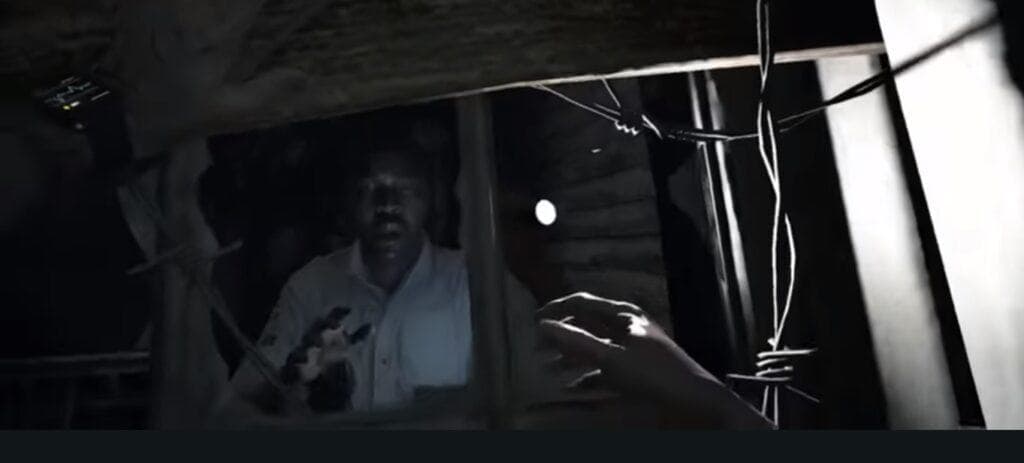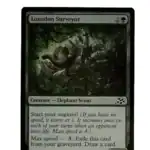The Resident Evil timeline stretches back over a century, beginning in 1919 with the tragic death of Mother Miranda’s daughter from the Spanish Flu. This rich history has evolved through numerous games, films, and other media, creating one of gaming’s most beloved horror franchises. Capcom has confirmed they’re working on more Resident Evil remakes, with reports suggesting that Resident Evil Zero and Code Veronica may be the next titles to receive the modern treatment.
The franchise has grown large enough that newer installments can selectively acknowledge past events, allowing developers creative freedom while maintaining a cohesive universe. This approach has helped Resident Evil stay relevant, with the timeline continuing to expand through 2025 with new mainline games, CGI films, manga, and additional media that further explore this zombie-infested world.
Where the Resident Evil Timeline Stands in 2025
The “Resident Evil” franchise has one of the most twisted and fascinating timelines in gaming. Spanning nearly three decades of horror, conspiracy, and mutated chaos, it’s a web of outbreaks, corporate coverups, and unforgettable characters. With new games, remakes, and a fresh film reboot in the works, 2025 marks a pivotal moment in understanding the full scope of Resident Evil’s universe.
Let’s unpack where everything stands.
Mainline Resident Evil Games in Chronological Order
Here’s how the core story unfolds across the mainline games—remakes included—based on in-universe events, not release dates:
| Year | Game Title | Key Events |
|---|---|---|
| 1998 | Resident Evil 0 | Bravo Team investigates the Arklay Mountains and discovers Umbrella’s twisted experiments. |
| 1998 | Resident Evil (REmake) | The iconic Spencer Mansion incident. S.T.A.R.S. Alpha Team confronts zombies, B.O.W.s, and Albert Wesker’s betrayal. |
| 1998 | Resident Evil 2 (Remake) | Leon and Claire fight for survival in a decaying Raccoon City, uncovering Umbrella’s G-Virus horrors. |
| 1998 | Resident Evil 3 (Remake) | Jill Valentine faces off against Nemesis during the city’s collapse, just days before its destruction. |
| 2002 | Resident Evil: Code Veronica | Claire’s search for Chris takes her to a prison island and reveals the twisted Ashford family legacy. |
| 2004 | Resident Evil 4 (Remake) | Leon Kennedy is sent to rescue the U.S. President’s daughter from a cult infected with Las Plagas. |
| 2009 | Resident Evil 5 | Chris and Sheva battle bio-terrorists in Africa and finally take down Wesker. |
| 2012 | Resident Evil 6 | A globe-spanning storyline featuring Leon, Chris, Ada, and new characters during multiple outbreaks. |
| 2017 | Resident Evil 7: Biohazard | A tonal reset—Ethan Winters searches for his wife in the terrifying Baker family household. |
| 2021 | Resident Evil Village | Ethan battles werewolves, vampires, and Mother Miranda in a gothic Eastern European village. |
Capcom has kept the continuity surprisingly tight, despite the sheer number of spin-offs and media adaptations.
Recent Developments in the Storyline
Resident Evil Village left the franchise in an unusual place. The end teased an aging Rose Winters (Ethan’s daughter) and hinted at a more supernatural evolution of the virus narrative—possibly setting the stage for Resident Evil 9, which is still unannounced but heavily rumored.
Leaks and industry chatter suggest:
- Resident Evil 9 may be fully open-world.
- Leon S. Kennedy could return as the protagonist.
- The story may explore the remnants of BSAA and tie back to Wesker’s legacy.
- A release window between late 2025 and early 2026 seems likely.
Remakes, Retcons, and Timeline Rewrites
Capcom’s recent remakes of RE2, RE3, and RE4 weren’t just visual upgrades—they subtly changed some lore, adjusted character arcs, and even shifted how events are framed in-universe.
Here’s how the remakes have impacted the timeline:
| Original Game | Key Changes in Remake |
|---|---|
| RE2 | Ada’s role is more mysterious, with deeper ties to future story threads. |
| RE3 | Timeline overlaps more clearly with RE2; Carlos and Jill have more grounded arcs. |
| RE4 | Luis Sera’s backstory expanded; Ashley and Leon’s relationship reworked to be less one-dimensional. |
These tweaks aren’t retcons—they’re refinements. Capcom is clearly future-proofing the story for newer fans while keeping legacy players hooked.
What’s Canon? Core Games vs. Side Content
The mainline numbered games form the backbone of the narrative. But there’s a ton of side content—some canon, some not-so-much.
| Title | Canon? | Notes |
|---|---|---|
| Revelations 1 & 2 | ✅ Yes | These games expand on the BSAA and introduce key characters like Moira Burton and Natalia. |
| Umbrella Chronicles | ✅ Partial | Retells major events from RE0, RE1, and RE3 with some added detail. |
| Operation Raccoon City | ❌ No | Considered non-canon; it explores an alternate version of RE2. |
| Resistance, Outbreak | ⚠️ Semi-canon | Set during RE2/RE3 timelines; loosely fit the timeline but not officially confirmed. |
| Resident Evil: Death Island (2023 CGI film) | ✅ Yes | Canon story bridging the gap between RE6 and RE7; features Leon, Jill, Claire, Chris, and Rebecca. |
If you want the core experience, stick to the mainline titles and the Revelations sub-series. The rest is more lore flavoring.
New Film Reboot in 2025-2026
In film news, a new Resident Evil movie reboot is in the works, aiming for a 2026 release. Unlike previous entries, this version will:
- Be directed by Zach Cregger (Barbarian)
- Feature original characters rather than franchise staples like Jill or Leon
- Focus on regular citizens caught in the Raccoon City disaster
- Take on a more grounded, horror-thriller tone
This could breathe new life into the movie adaptations, which have long struggled to balance fan service with actual storytelling.
Where Things Might Go Next
Capcom seems to be building toward a final arc that brings together old and new generations—Leon, Claire, Jill, Chris, Ada, and Rose Winters. The question is: how do you tie a bow around a franchise that has spanned viruses, cults, clones, corporate conspiracies, and mold monsters?
Here are a few fan theories floating around:
- Rose Winters becomes the central figure in the next trilogy.
- The Wesker legacy isn’t over—possibly through clones or flashbacks.
- Umbrella may resurface—not the original company, but a new version with deeper global ties.
- RE9 could be the beginning of the end—wrapping up arcs while setting up a soft reboot.
For now, all eyes are on what Capcom does next. Whether it’s through another remake (Code Veronica, anyone?) or the long-awaited Resident Evil 9, the franchise is far from done evolving.
Key Takeaways
- The Resident Evil timeline spans over 100 years, starting in 1919 with Mother Miranda’s backstory and continuing through multiple interconnected stories.
- Capcom is developing new remakes of classic titles like RE Zero and Code Veronica to modernize earlier chapters of the saga.
- The franchise has evolved to allow selective continuity, enabling developers to craft fresh stories while honoring the established timeline.
Exploring the Origins
The Resident Evil franchise began with a fateful incident in the Arklay Mountains near Raccoon City. This pivotal event revealed the dark secrets of the Umbrella Corporation and introduced key characters who would become central to the ongoing battle against bioterrorism.
The Mansion Incident Overview
The Spencer Mansion incident of 1998 marks the beginning of the Resident Evil timeline. After several bizarre murders occurred in the Arklay Mountains, the S.T.A.R.S. Alpha team was dispatched to investigate. Their helicopter crashed, forcing them to seek refuge in the mansion.
Inside, team members including Chris Redfield and Jill Valentine discovered horrifying experiments conducted by Umbrella. They encountered zombies and other creatures created by the T-Virus.
The mansion contained secret laboratories where illegal bioweapon research took place. As team members explored the facility, they uncovered evidence linking Umbrella to the outbreak. The incident concluded with the destruction of the mansion, but not before several S.T.A.R.S. members escaped with crucial evidence.
The Umbrella Corporation Exposed
Umbrella Corporation presented itself as a pharmaceutical company but secretly developed biological weapons. Founded by Oswell E. Spencer, Edward Ashford, and James Marcus in 1968, Umbrella’s true purpose was hidden from the public.
The company’s research focused on the Progenitor virus, which later led to the creation of the T-Virus. This virus could transform humans into zombies and mutate animals into dangerous creatures.
After the Mansion Incident, Umbrella faced increasing scrutiny. The corporation maintained political connections that protected them initially. However, the Raccoon City disaster in September 1998 became impossible to cover up.
Evidence collected by Chris Redfield and Jill Valentine eventually led to Umbrella’s downfall. By 2003, the company faced bankruptcy after being legally prohibited from conducting business in the United States.
Key Figures in the Early Years
Albert Wesker served as captain of S.T.A.R.S. Alpha team while secretly working for Umbrella. He orchestrated the mansion incident to collect combat data on B.O.W.s (Bio-Organic Weapons). Wesker injected himself with a virus that gave him superhuman abilities.
Barry Burton, weapons specialist for S.T.A.R.S., was blackmailed by Wesker to betray his teammates but ultimately helped them escape. His expertise with firearms proved crucial during the mansion incident.
Jill Valentine and Chris Redfield emerged as the primary protagonists. Jill, known as the “Master of Unlocking,” demonstrated exceptional survival skills. Chris, a former Air Force pilot, showed remarkable determination in uncovering Umbrella’s secrets.
Dr. William Birkin, creator of the G-Virus, represents another significant figure whose work would later cause the Raccoon City outbreak. His research expanded upon the original T-Virus, creating even more dangerous biological threats.
Mainline Game Chronology
The Resident Evil series follows a complex timeline that spans multiple decades, with interconnected stories across its mainline entries. Understanding the chronological flow helps players appreciate the evolution of the bioterror threats and character development.
Early Installments and Timeline Fundamentals
The chronological journey begins with Resident Evil 0 (set July 23-24, 1998), which serves as a prequel featuring Rebecca Chambers and convict Billy Coen investigating the Umbrella Corporation’s early experiments. This leads directly into the original Resident Evil (July 24-25, 1998), where the S.T.A.R.S. Alpha Team, including Chris Redfield and Jill Valentine, investigate the Spencer Mansion incident.
The events at the mansion expose Umbrella’s illegal bioweapon research and set the foundation for the series’ ongoing conflict. These early games establish core characters and the T-virus threat that would eventually spread beyond the mountains surrounding Raccoon City.
Resident Evil: Code Veronica chronologically follows several months later (December 1998), taking Claire Redfield to Rockfort Island in search of her brother Chris.
Resident Evil 2 and Raccoon City
Resident Evil 2 takes place on September 29-30, 1998, when rookie police officer Leon Kennedy and college student Claire Redfield arrive in Raccoon City during the height of the T-virus outbreak. The city has fallen into chaos as the infection from the Spencer Mansion incident spreads to the urban population.
The game explores multiple locations throughout Raccoon City, most notably the police department where survivors attempt to shelter from the growing zombie threat. Players experience the horrors of the fully realized outbreak through dual protagonists with interconnected stories.
The 2019 remake enhanced this narrative while maintaining the original timeline placement, adding depth to character relationships and the catastrophic collapse of Raccoon City’s infrastructure.
Resident Evil 3 and Nemesis Encounter
Interestingly, Resident Evil 3: Nemesis overlaps with RE2’s timeline. The game begins on September 28, 1998 (slightly before RE2) and concludes on October 1, following Jill Valentine’s escape from Raccoon City.
During this period, Jill encounters the relentless Nemesis, a specialized B.O.W. designed specifically to hunt and eliminate S.T.A.R.S. members. On September 29, Jill becomes infected with the T-virus and falls unconscious. Her ally Carlos Oliveira administers a cure on September 30.
The game culminates with Raccoon City’s complete destruction via missile strike, marking a pivotal moment in the series timeline and forcing Umbrella to face public scrutiny for their involvement.
Recent Releases and Future Projections
The mainline series continues with Resident Evil 4 (2004), Resident Evil 5 (2009), Resident Evil 6 (2013), Resident Evil 7: Biohazard (2017), and Resident Evil Village (2021), all advancing the timeline forward.
Recent news from Capcom confirms development on additional remakes following the success of RE2, RE3, and RE4 remakes. Reports suggest Resident Evil Zero and Code Veronica remakes may be next in line, potentially releasing in 2025-2026.
These remakes maintain the original chronological placement while modernizing gameplay and expanding narrative elements. They allow new players to experience the complete timeline with consistent gameplay mechanics across entries.
The future roadmap appears focused on filling timeline gaps through remakes while potentially developing the next mainline entry to continue the story beyond Village.
Spin-Offs and Extended Lore
Beyond the main games, Resident Evil’s universe expands through various spin-offs that add depth to the survival horror franchise. These additional stories explore different characters, time periods, and incidents that weren’t covered in the numbered titles.
Biohazard Outbreak and Survivor Stories
The Resident Evil Outbreak series remains a notable part of the extended universe, focusing on everyday citizens during the Raccoon City incident. According to search results, Outbreak Files 1 and 2 take place from September 24 to October 1, 1998, filling crucial timeline gaps. These games introduced cooperative gameplay where players worked together to escape the zombie apocalypse.
Several other survivor-focused games like Resident Evil: Survivor and Dead Aim explored different victims of Umbrella’s bioweapons. The Umbrella Chronicles retold key events from the main series while adding new context and connections between incidents.
Recent reports suggest that Capcom might be considering remakes of some spin-off titles after the success of their mainline remakes.
Resident Evil Revelations Series
The Revelations series bridges important timeline gaps between major numbered titles. Revelations takes place between Resident Evil 4 and 5, following Jill Valentine investigating bioterrorism on a ghost ship.
Revelations 2 occurs between Resident Evil 5 and 6, featuring Claire Redfield and Barry Burton dealing with a new viral outbreak on a remote island. This series explores the global impact of bioterrorism after Umbrella’s fall.
The episodic format of these games allowed Capcom to experiment with storytelling techniques while maintaining the core survival horror elements. The Revelations games are considered important for understanding how the Resident Evil world evolved after the Raccoon City disaster.
Resident Evil: Infinite Darkness
Released on Netflix, Infinite Darkness is a CGI animated series that expands the franchise’s lore between Resident Evil 4 and 5. The series follows Leon Kennedy and Claire Redfield investigating separate incidents that ultimately connect to a government conspiracy.
The show explores political tensions caused by bioweapons and the long-reaching impact of Umbrella’s legacy. Its events add context to the changing world of Resident Evil during the early 2000s.
While reception was mixed, the series adds important details about how government agencies dealt with bioterrorism threats. Infinite Darkness highlights how both Leon and Claire continued fighting bioweapons threats long after Raccoon City, though through different methods.
Cinematic Universe
Resident Evil’s cinematic adaptations have expanded the franchise beyond gaming, creating multiple interpretations of the zombie-infested world. These adaptations have varied in their approach to the source material, with some following original storylines while others attempt to recreate the games more faithfully.
Live-Action Movies
The original Resident Evil film series, starring Milla Jovovich as Alice, spanned six movies from 2002 to 2016. These films created their own timeline separate from the games, focusing on the original character Alice rather than game protagonists.
The series grossed over $1.2 billion worldwide despite mixed critical reception. Director Paul W.S. Anderson took creative liberties with the source material, incorporating game elements like the T-virus, Umbrella Corporation, and monsters like Lickers and Nemesis.
Recent news suggests a possible reboot of this action-oriented film series. Industry insiders report that studios are considering a return to this continuity due to its commercial success, though no official announcements have been made as of March 2025.
Resident Evil: Welcome to Raccoon City
Released in 2021, “Welcome to Raccoon City” attempted a more faithful adaptation of the first two Resident Evil games. Director Johannes Roberts created a horror-focused film that combined elements from both titles into a single night in 1998.
The movie featured game characters including Claire Redfield, Chris Redfield, Jill Valentine, and Leon Kennedy. Despite targeting fans with recognizable locations like the Spencer Mansion and Raccoon City Police Department, the film received mixed reviews.
Recent reports indicate a sequel remains in development despite underwhelming box office performance. The potential follow-up would allegedly explore events from Resident Evil 3 and Code: Veronica, continuing the more game-accurate timeline.
Animated Features and Netflix Adaptations
Capcom has produced several animated films that fit directly into the game timeline. “Infinite Darkness,” released on Netflix in 2021, featured Leon Kennedy and Claire Redfield investigating a zombie outbreak at the White House.
Netflix also created a live-action series in 2022 set in both 2022 and 2036, showing the lead-up to and aftermath of a global T-virus outbreak. The series was canceled after one season due to negative reception from critics and fans alike.
The animated films, including “Degeneration,” “Damnation,” and “Vendetta,” remain the most canonical adaptations. Industry sources suggest a new animated project is currently in development, potentially focusing on other game characters who haven’t received as much screen time in previous adaptations.
Evolution of Gameplay and Mechanics
The Resident Evil franchise has undergone dramatic transformations in its gameplay systems since 1996. These changes reflect both technological advancements and shifting player preferences across nearly three decades of development.
Survival Horror Roots and Innovations
The original Resident Evil titles established the survival horror genre with fixed camera angles, limited resources, and puzzle-solving elements. Players faced difficult inventory management decisions while conserving ammunition and healing items. Tank controls, though initially frustrating, added to the tension by making character movement deliberately cumbersome.
Resident Evil 2 and 3 refined these mechanics while maintaining core survival elements. The introduction of the “Zapping System” in RE2 allowed players to experience interconnected scenarios from different character perspectives.
Early titles used distinctive save systems requiring “ink ribbons” at typewriters, creating strategic decisions about when to secure progress. This scarcity of resources became a defining characteristic of the survival horror experience that Capcom pioneered.
Action-Oriented Shift in Resident Evil 4 and 5
Resident Evil 4 revolutionized the series in 2005 with an over-the-shoulder camera perspective that dramatically improved combat possibilities. This new approach featured precision aiming, contextual actions, and quick-time events that made the gameplay more dynamic and responsive.
RE4 introduced the attache case inventory system, allowing for strategic organization of weapons and items. The merchant character (“What are ya buyin’?”) created a progression system through weapon upgrades.
Resident Evil 5 pushed further into action territory with cooperative gameplay mechanics. Chris Redfield and Sheva Alomar could share resources, assist each other in combat, and perform team attacks. This entry emphasized combos, melee finishers, and faster-paced encounters over atmospheric horror.
Return to Survival Horror in Resident Evil 7 and 8
Resident Evil 7: Biohazard marked a return to survival horror fundamentals with a first-person perspective. This intimate viewpoint intensified the horror experience while limited inventory, resource scarcity, and vulnerability to enemies restored tension to gameplay.
The Baker family compound’s claustrophobic setting emphasized stealth and evasion tactics. Players had to choose carefully between fight or flight, with combat serving as a last resort rather than the primary gameplay loop.
Resident Evil Village (RE8) balanced horror and action elements by maintaining the first-person perspective while expanding combat options. The game’s distinct areas each offered unique gameplay challenges – from the stealth-focused Castle Dimitrescu to the action-heavy Heisenberg Factory.
Both titles incorporated VR compatibility, adding an unprecedented level of immersion to the horror experience and showing Capcom’s commitment to evolving the franchise with new technologies.
Key Characters and Archetypes
The Resident Evil franchise features iconic protagonists and villains who have evolved throughout the series timeline. These characters have distinct abilities and personality traits that make them memorable across games, films, and other media.
Jill Valentine and Chris Redfield
Jill Valentine first appeared in the original Resident Evil as a member of S.T.A.R.S. Alpha Team. Her lockpicking skills and resilience have made her a fan favorite. In Resident Evil 3, she survived Raccoon City and the relentless pursuit by Nemesis.
Chris Redfield, Jill’s partner from the S.T.A.R.S. team, has one of the longest story arcs in the series. He appeared in the original game and returned in later installments like Code Veronica, Resident Evil 5, and Resident Evil Village.
Both characters have unique gameplay mechanics in the games. Jill typically has more inventory space and lockpicking abilities, while Chris features enhanced strength and combat capabilities. Their character archetypes have influenced many games in the survival horror genre.
Leon S. Kennedy and Claire Redfield
Leon S. Kennedy began as a rookie police officer on his first day during the Raccoon City outbreak in Resident Evil 2. His journey continued in Resident Evil 4, where he rescued the president’s daughter from a parasitic cult.
Claire Redfield, Chris’s younger sister, became involved while searching for her brother. She’s known for her resourcefulness and determination to protect others, especially in her relationship with Sherry Birkin in Resident Evil 2.
Both characters offer different playstyles in the games. Leon often focuses on precision shooting and combat, while Claire typically emphasizes resource management and puzzle-solving. Recent games have maintained these distinct gameplay elements while enhancing their unique character traits.
Villains and Notable Antagonists
Albert Wesker stands as the franchise’s most recognizable villain. Initially appearing as a S.T.A.R.S. captain before revealing himself as a double agent working for Umbrella Corporation. His superhuman abilities and elaborate schemes have made him a persistent threat across multiple games.
George Trevor, though less prominent, played a crucial role in the series lore. As the architect who designed the Spencer Mansion, his tragic story adds depth to the early timeline.
Other notable antagonists include:
- Mother Miranda: The primary villain in Resident Evil Village whose actions date back to 1919
- William Birkin: Scientist who created the G-Virus
- Jack Baker: Patriarch of the infected Baker family in Resident Evil 7
These villains showcase different types of horror, from calculated masterminds like Wesker to tragic figures corrupted by biological weapons.
The Impact of Resident Evil on Gaming
Resident Evil has fundamentally changed the gaming landscape since its debut in 1996, pioneering survival horror mechanics and setting benchmarks for storytelling in games. The franchise survived its own near-death experience after Resident Evil 6 and emerged stronger.
Setting Industry Standards
Resident Evil created the survival horror genre as we know it today. The series introduced limited resources, puzzle-solving, and tense atmosphere as core gameplay elements that many games still follow.
When Capcom faced an identity crisis after Resident Evil 6, they made a bold decision to return to the series’ horror roots. This back-to-basics approach with Resident Evil 7 and the remakes of earlier titles sparked a revival not just for the franchise but for horror gaming as a whole.
The series pioneered:
- Fixed camera angles that created tension (early games)
- Resource management systems that increased player anxiety
- Over-the-shoulder perspective (RE4) that influenced countless third-person games
- VR integration that set new standards for immersion (RE7)
Influence on Pop Culture and Media
Resident Evil’s impact extends far beyond gaming. The franchise helped legitimize video game adaptations in Hollywood with six live-action films, animated movies, and a Netflix series.
The series popularized zombies in mainstream entertainment years before “The Walking Dead” became a phenomenon. Its imagery of pharmaceutical corporations causing apocalyptic scenarios has become a recurring theme in fiction.
Resident Evil’s characters like Jill Valentine, Leon Kennedy, and Claire Redfield have become gaming icons. Their stories spanning from the Raccoon City incident to global bioterrorism threats have created a rich universe that continues to expand.
The franchise’s ability to reinvent itself while maintaining its core identity has kept it relevant for nearly three decades, influencing how game developers approach horror storytelling and character development.
Future of Resident Evil
The Resident Evil franchise is poised for significant growth with new games and media planned through 2025 and beyond. Fans can look forward to both fresh titles and remakes of classic entries in the series.
Announcements and Upcoming Titles
Resident Evil 9 is scheduled for release in the first quarter of 2025, according to recent reports. This mainline entry will continue the core story that has evolved through previous games.
January 2025 will also see the release of “George A. Romero’s Resident Evil,” a documentary exploring the famous horror director’s unrealized vision for a live-action adaptation of the game. This provides a fascinating glimpse into what might have been for the franchise.
Several remakes are reportedly in development as well. Unlike earlier remakes, these upcoming titles are expected to have “little to no cut content,” suggesting more faithful adaptations of the original games.
A Code Veronica remake has been mentioned in industry reports, though official confirmation from Capcom is still pending.
2036: Forecasting the Next Decade
Looking ahead to 2036, industry analysts predict the Resident Evil timeline will expand to include new threats beyond the established T-virus and other familiar bioweapons.
Future installments might explore more global scenarios, potentially including storylines involving government agencies like the fictional Resident Evil equivalent of the White House or international organizations.
The franchise will likely continue its mix of remakes and new titles, maintaining relevance with both nostalgic players and newcomers to the series.
Technology advancements by 2036 may allow for fully immersive horror experiences through improved VR or other emerging platforms, taking Resident Evil’s signature tension and scares to new heights.
Capcom’s strategy of revitalizing the franchise after Resident Evil 6 has proven successful, giving fans confidence in the series’ long-term direction.
Frequently Asked Questions
The Resident Evil timeline has sparked numerous questions from fans trying to piece together the complex narrative spanning multiple games, movies, and other media. Below are answers to some of the most common questions about the series chronology and future releases.
How does the storyline of Resident Evil 7 fit into the main series timeline?
Resident Evil 7 takes place in 2017, approximately four years after the events of Resident Evil 6. The game introduces Ethan Winters, a new protagonist searching for his missing wife Mia in rural Louisiana.
While it initially appears disconnected from previous games, RE7 maintains continuity through the appearance of Chris Redfield in the ending and DLC. The game represents a shift back to horror roots while still existing within the established universe.
The infection in RE7 comes from the mold created by Eveline, a bio-organic weapon, rather than traditional T-virus variants seen in earlier games.
What are the chronological events of the Resident Evil games and movies?
The Resident Evil timeline begins in 1919 with Mother Miranda’s backstory, though the main series events start with Resident Evil 0 and the original game, both set in 1998 during the Raccoon City incident.
Resident Evil 2 and 3 occur concurrently in September 1998, with RE3 starting before RE2 but ending after it. Resident Evil Code: Veronica follows in December 1998.
Resident Evil 4 takes place in 2004, RE5 in 2009, and RE6 in 2013. After RE7 (2017), Resident Evil Village continues Ethan’s story in 2021.
The CGI movies like Degeneration, Damnation, and Vendetta fit between the main games, while the live-action films follow a separate timeline.
What is the confirmed release date for Resident Evil 9?
As of March 2025, Capcom has not officially announced a release date for Resident Evil 9. Industry insiders suggest development is underway, with rumors pointing to a late 2025 or 2026 release window.
The game is expected to conclude the “Winters family saga” that began with Resident Evil 7 and continued in Village. Capcom typically spaces mainline entries 3-4 years apart, supporting these timeline predictions.
No official title, story details, or gameplay information has been confirmed yet.
Is there an official timeline that addresses the events of Resident Evil 4 within the series?
Yes, Resident Evil 4 is officially set in 2004, six years after the Raccoon City incident. The game follows Leon S. Kennedy on a mission to rescue the President’s daughter from a rural Spanish village.
While RE4 initially seemed disconnected from the main storyline, later games and supplementary materials have connected its Las Plagas parasites to broader series lore. The Connections organization mentioned in RE7 has ties to the Los Illuminados cult.
The 2023 remake of RE4 reinforced these connections and added new lore details that better integrate the game’s events into the overall timeline.
When is Resident Evil 3 set in relation to the other games in the series?
Resident Evil 3 takes place in September 1998, during the Raccoon City outbreak. The timeline of RE3 overlaps with Resident Evil 2, with Jill Valentine’s story beginning about 24 hours before Leon and Claire arrive in the city.
The first half of RE3 occurs before RE2, while the second half happens concurrently and slightly after RE2’s events. The game concludes with the complete destruction of Raccoon City on October 1, 1998.
This timeline was further clarified in the 2020 remake, which maintained the same chronological relationship to RE2.
What developments can we expect in the Resident Evil franchise in the near future?
Capcom is reportedly working on both Resident Evil 9 and additional remakes of classic titles. Following the success of the RE2, RE3, and RE4 remakes, rumors suggest Code: Veronica or RE5 could be next for the remake treatment.
The franchise continues to expand beyond games with a new animated series in development for streaming platforms. This series will reportedly explore events between Resident Evil Village and the forthcoming RE9.
Capcom has registered several new trademarks that may hint at spin-off titles or new game mechanics coming to the franchise. Industry analysts expect announcements at major gaming events in the coming months.






